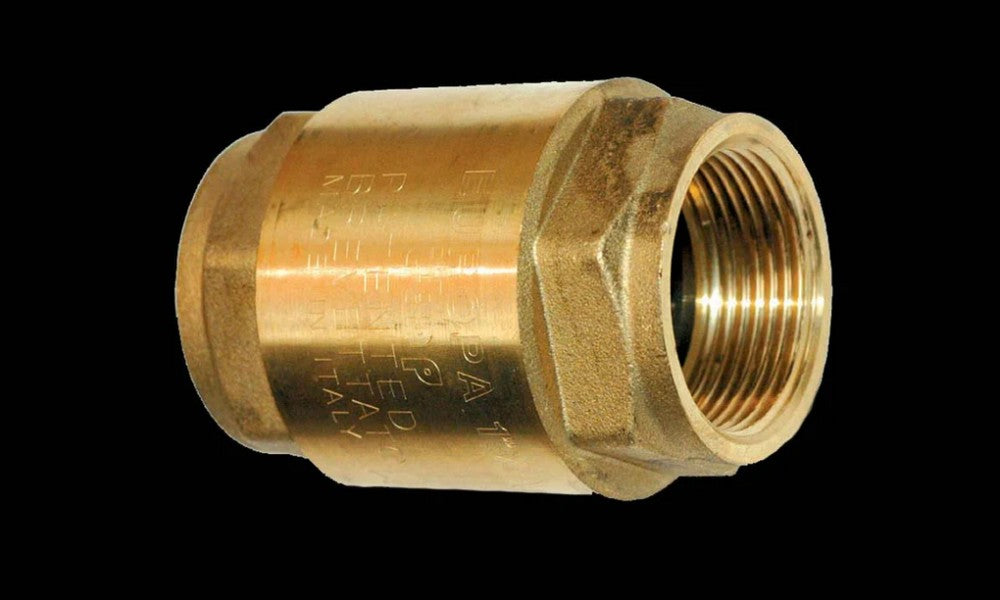An important concept in check valves, or one-way valves, is the cracking pressure. Cracking pressure is a measure of the pressure differential between the valve’s inlet and outlet ports when flow is first detected. Typically the check valve is designed for and can therefore be specified for a specific cracking pressure.
One way to test cracking pressure is to do a simple air pressure test. It estimates the cracking pressure of a spring loaded check valve.
Attach a pressurized air line with a control valve and a pressure gauge to the inlet side of the check valve. Then place the check valve in a container filled with water. The pressure of the air coming into the check valve can be gradually increased using the control valve.
The cracking pressure of the valve will be about the same as the pressure gauge measurement when there is detectable flow through the check valve. Detectable flow will be the first small but steady stream of bubbles to come out through the outlet port of the check valve.
This is obviously a very rough-and-ready approach and cracking pressure quality control testing rigs are much more rigorous and carefully designed.
One thing a simple air pressure test clearly demonstrates is what it means to say a check valve’s cracking pressure has been reached because there is detectable flow.

